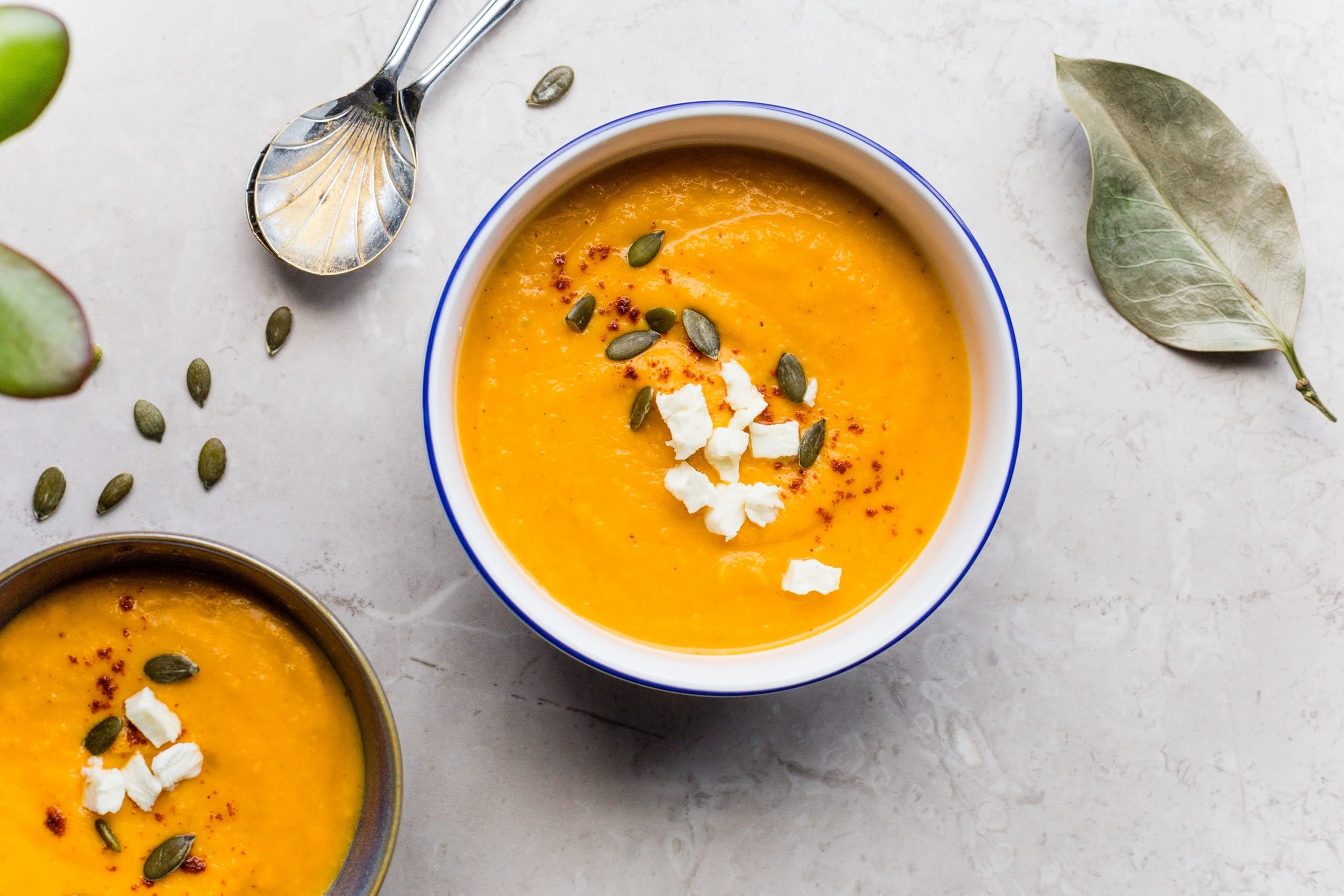04 Oct 3 Healthy & Weight-Loss Friendly Ways to Eat Pumpkin
Carving pumpkins this autumn? Don’t let the flesh go to waste. There are plenty of ways to eat pumpkin and make the most of their nutrient dense flesh. Pumpkin is low-carb and nutrient rich, providing good levels of fibre, zinc and beta carotene. They’re also extremely versatile. Here are three ways to eat pumpkin…
If you’d like to find out how we can help you overcome your weight challenges, achieve your desired weight and maintain it long term, we invite you to book a complimentary call with a member of our team to learn more.
IS PUMPKIN GOOD FOR WEIGHT LOSS?
Rich, sweet and creamy, many people avoid pumpkin thinking it isn’t a good choice for those watching their weight. But pumpkin can be a really healthy addition to your diet, even if you’re trying to lose weight. Pumpkin is low in calories, with less than 50 calories per cup of cooked pumpkin, making it a great choice for calorie counters. Pumpkin is also high in fibre, which promotes feelings of fullness and helps curb appetite, potentially reducing overall food intake. Its high water content (94%) contributes to its weight-loss-friendly nature, allowing you to eat more volume for fewer calories, and stay hydrated. Additionally, pumpkin is rich in nutrients like vitamins A and C, potassium, and antioxidants, supporting overall health.
This 2022 paper concludes that pumpkin flesh, seeds, and peel are nutrient-dense sources of carotenoids, tocopherols, unsaturated fatty acids, phytosterols, phenolics, and polysaccharides that collectively show antioxidant, anti-inflammatory, antidiabetic, cardioprotective, antimicrobial, gastroprotective, wound-healing, and prostate-health benefits in preclinical and some clinical studies.
EAT THE WHOLE PUMPKIN
When pumpkin is purchased in season, it’s typically grown locally, meaning fewer food miles, reduced energy for storage or transport, and fresher, more nutrient-dense produce at its peak. Seasonal crops like pumpkin also require less artificial input and support local farmers, making them a smart choice for sustainable diets. What makes pumpkin especially eco-friendly is how little of it needs to go to waste; nearly every part can be enjoyed to minimise food waste. Roast the flesh for comforting mains or breakfast bowls, whirl it into smoothies for a bright, vitamin-packed boost, or blend into warming soups. Don’t forget the seeds: simply toast them with a pinch of seasoning for a fibre-and mineral-rich snack that’s high in healthy fats and plant-based protein, or sprinkle them on top of salads and granola. Even the peel can be crisped as chips or added to stocks, further reducing what ends up in the bin.
3 WAYS TO EAT PUMPKIN
PUMPKIN SOUP
Soups are a great option at this time of the year as the weather starts to get cooler. Make a big pot of vegetable soup over the weekend and take it to work for weekday lunches alongside some protein. This delicious Thai Pumpkin Soup is a great option – use coconut oil instead of sunflower oil and skip the sugar, or swap it for xylitol.
ROAST PUMPKIN
Roasting is one of the simplest way to eat pumpkin. Simply chop it into chunks, drizzle it with some olive oil, season with cracked black peppers and sea salt and roast in the oven at 200c for around 30 minutes, or until the chunks are tender. Roasted pumpkin goes really well alongside any kind of baked fish fillets and some wilted leafy greens. The leftovers can also be eaten cold in a salad.
PUMPKIN MUFFINS
These keto pumpkin muffins are made with coconut flour and are healthy and filling enough to eat for breakfast. You can make your own pumpkin puree from your carved pumpkins rather than buying shop bought in cans. As for sweetener, xylitol is our go-to sweeter of choice and is now widely available in most supermarkets. The internet is a great source of recipe inspiration and there are many ideas for healthy pumpkin muffins and cookies.
IS EATING SEASONALLY GOOD FOR WEIGHT LOSS?
Eating seasonally can significantly support weight loss efforts, providing fresh, nutrient-dense foods that help regulate appetite and reduce calorie intake. Autumn brings an abundance of foods like hearty root vegetables—carrots, parsnips, and swede—that are low in calories but high in fibre, promoting fullness and satisfaction. Apples and pears also peak during this season, offering natural sweetness for an occasional sweet treat. Pumpkins and squash are rich in fibre and antioxidants, aiding weight management and immune health. Incorporating local, in-season choices not only enhances flavour and nutritional value but also reduces reliance on energy-intensive imports, supporting sustainability. Seasonal foods are typically cheaper and more available, making it easier to create varied, fresh, satisfying meals that align with weight loss goals. By focusing on these fresh, local options, you can enjoy delicious, healthful eating while minimising food waste and boosting wellbeing.
WORK WITH US
We are a team of qualified nutritionists who specialise in weight loss. If you’re ready to overcome your weight challenges, achieve your goal weight and maintain it long term, we can help. You can use this link to book in for a complimentary call today. This is an opportunity to talk through your challenges with a member of our team and decide together whether one of our Intelligent Weight Loss programmes is right for you. Or contact us to request a copy of our brochure and we will get back to you soon.
Sign up for Kim’s weekly weight loss and wellness newsletter to receive the latest news, expert tips and advice direct to your inbox.
